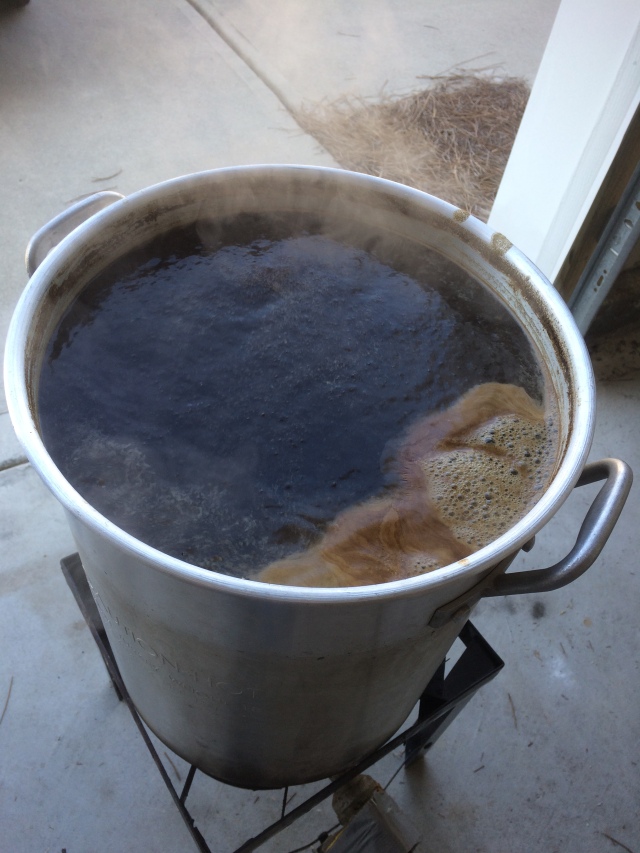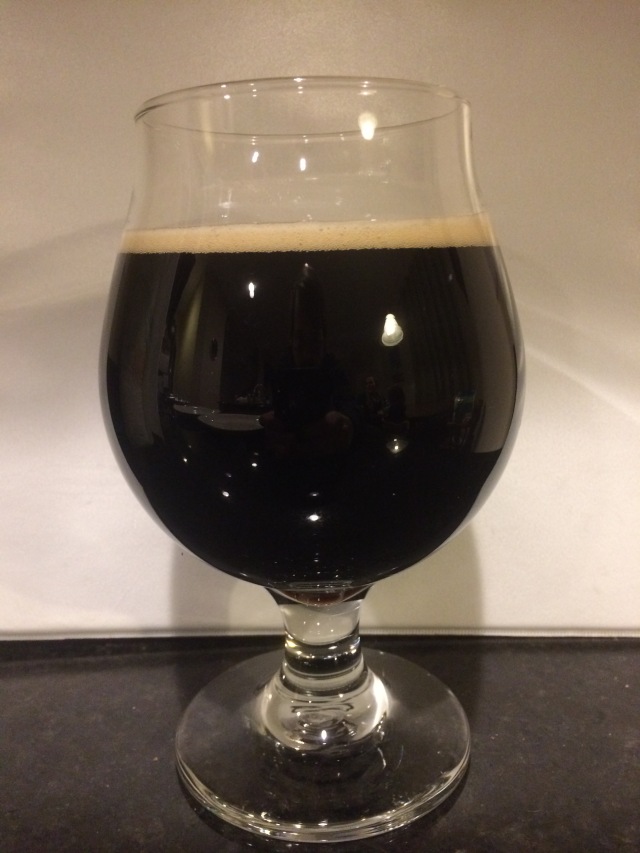This post is one in a series following six brewers collaborating to each make a small adjustment to a single recipe in order to improve it, then pass it along to the next brewer. We hope to learn more about the art of recipe creation as we see how other brewers approach the same recipe. The rest of the series can be found here.
Author: C. McKenzie
Collaborative Iterations
After brewing ten iterations of the same style, it was absolutely refreshing to design a recipe for something different. I don’t at all regret only brewing red IPA for an entire year, but my “to brew” list has been steadily growing with new ideas. The time to move forward had come.
In the spirit of moving forward, things are going to look a little different this time around. While these posts will still be focused on brewing a single style that will change and grow (and hopefully improve) over the course of several iterations, I will not be the only one contributing to these various versions of the recipe. Five others will be joining me in this journey, and each will have a turn at changing something with this recipe. I’m personally really looking forward to having other perspectives on recipe creation represented here.
Brew Day
Overall, this brew day felt like how I like my brew days to feel: relaxing. The focus on repeated results with brewing the red IPA forced me to learn my system better than I knew it before, which allowed me to better estimate what kind of volumes I would get and how I needed to approach the day, even though I had a different recipe with a different amount of grains in front of me. That kind of confidence in my expectations felt really good.
I mashed in and went about my day for a while. When I returned to gather my boil wort, I gathered some of it in a cup and set it aside for a pre-boil gravity measurement. While I was letting my sample cool down enough to take a gravity reading, I was also bringing my kettle up to a boil. During the course of moving some things around and trying to clean up a little during the downtime, I kicked over my pre-boil wort sample. Instead of taking a sample out of the kettle (it was near boiling and I didn’t have anything handy that wouldn’t melt or shatter from thermal shock to take another sample), I simply relied on my calculations and hoped they were accurate.

After adding the hops, cutting the flame, and chilling my wort, I gathered the wort into my carboy and realized that my evaporation rate apparently wasn’t as much as I anticipated based on past numbers. This left me with closer to 6 gallons in the carboy instead of my expected 5.5, which resulted in being a little lower in gravity than what I had targeted, although not by much. I carried on, pitched my yeast, and within 24 hours had a nice, thick krausen atop my beer.

Recipe
The origin of this recipe is an adjustment to and hybrid of previous stout recipes I’ve made. My initial thoughts behind this were to seek after a standard stout roastiness, with some of the chocolate and coffee notes that come with it, while also adding a layer of depth with some nutty, toasted flavors. The goal with the hop selection was to add somewhere close to a 1:1 BU:GU (bitterness units to gravity units) ratio and achieve some earthy and herbal notes without too much fruit or floral character. In my mind, this hop profile fits better with the chocolate and coffee notes often associated with dark malts. I’m a big fan of earthy coffee, which probably influenced this decision. The resultant recipe is as follows:
- Mashed at 155⁰ F
- 8 lbs. 2-Row (80%)
- 1 lb. Victory (10%)
- 0.5 lbs. Roasted Barley (5%)
- 0.5 lbs. Carafa III (5%)
- Boiled for 1 hr.
- 1 oz. Nugget (60 min) at 13.3% AA (47.7 IBUs
- 1 oz. Willamette (5 min) at 5.1% AA (3.6 IBUs)
- Pitched US-O5
- OG: 1.054
- FG: 1.010
- ABV: 5.8%
Tasting
This beer poured opaque and had a moderate, tan head that had moderate retention.
The aroma was one of cold-brewed coffee. There was a hint of dark chocolate as well—that particular scent of a chocolate bar made with 80% or more cacao. A hint of earthiness also came through, and reminded me (pleasantly) of wet dirt—like digging deep into rich soil a few days after a heavy rain.
The taste had notes of dark chocolate that shifted to a strong flavor of toast. These flavors faded into a hint of darkly roasted coffee that held some acridness in the finish.

What I Would Change
Allow me to preface this section by stating that what follows is my thoughts on how I would change this beer if I brewed it again next time. However, I will not be the one brewing the next iteration of this beer, and the brewer for Iteration 2 will not see my tasting notes or thoughts on this beer until after he has brewed Iteration 2. Any similarities between preferences will be genuine and not influenced by each other’s commentary on the beer, and any differences will be a true display of the differences in individual perception of flavor.
With that said, the acridness I mentioned above is present as a background note, but it is slightly off-putting when it’s noticeable (which is admittedly not on every sip). Perhaps 10% roasted malt is a bit too much, or at the least 5% Carafa III (which is roasted to somewhere over 500⁰ Lovibond) was a little too much when paired with the roasted barley (roasted to 300⁰ L). If I brewed this again, I would definitely want to take some steps to remove this acridness, and that would likely mean lowering the percentage of roasted grains, pairing the roasted barley with another malt roasted to a lower Lovibond than the Carafa III, or using the special/dehusked version of Carafa III instead.
I said I wanted toasted flavors in this beer, and they definitely came through. I think, though, that the flavor is a bit too much and would pair better with the other flavors if it was slightly less pronounced. I also think this beer might benefit from a little more hop character, but I admit that I’m on the fence about this point. The bitterness level is great for the style and balances the malt well; however, while the malt is definitely the star of this style, I think the overall flavor might benefit from using a more expressive hop at the end of the boil or adding more of the Willamette at the 5 minute mark.
The body of the beer was a bit lacking, and it finished thinner and dryer than I’d prefer for a stout. I would definitely consider mashing higher, having a higher OG, or using a different yeast to avoid the beer drying out to 1.010 if I were to brew this again.

Pingback: Stout: Iteration 8 | brewublog